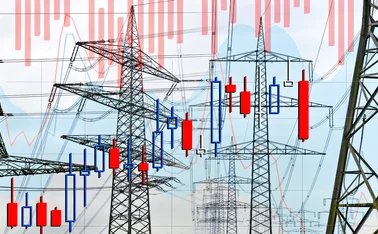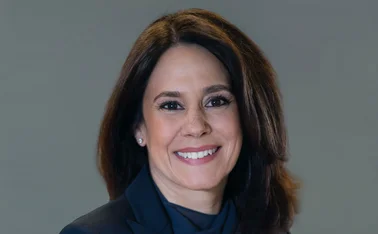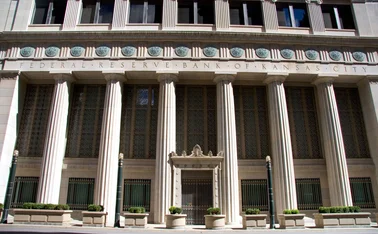
Can central bankers turn finance green?

What are the most significant achievements of central bankers in the past 30 years? The list would include the US Federal Reserve’s adoption of quantitative easing in 2008 and Mario Draghi’s pledge to do “whatever it takes” to save the euro in 2012. In another 10 or 20 years, perhaps we will view the conference held at the Banque de France in December 2017 as equally significant.
The One Planet Summit inaugurated the Network for Greening the Financial System (NGFS). Leading central bankers had already become more vocal on environmental issues before that meeting: Mark Carney – who led the Bank of Canada and then the Bank of England – Banque de France’s François Villeroy de Galhau and Netherlands Bank (DNB) governor Klaas Knot were among those to call for major changes to the financial system’s approach to the environmental crisis. But neither governments nor the private sector were taking action fast enough, the senior central bankers believed. They would have to do the job, one of extraordinary importance, themselves.
Many large reports have been published on climate change. One of the best-known recent efforts is the Green New Deal brought about by activists on the left of the US Democratic Party, and publicised by Congresswoman Alexandria Ocasio‑Cortez. The first comprehensive NGFS report, published in April, is rather different in tone to the Green New Deal. Its approach is detailed and rigorous, and does not promise that adopting its recommendations will solve all environmental problems. But it may well turn out to be the more important document.
Starting points
The NGFS founding members who met in Paris in December 2017 were mostly from the European Union: the central banks of Germany, the UK and the Netherlands, as well as Sweden’s Financial Services Authority, and both the Banque de France and its regulatory subsidiary, the Autorité de Contrôle Prudentiel et de Résolution.
But it was not solely a European initiative; the Bank of Mexico was a founding member, alongside the Monetary Authority of Singapore and, perhaps most significantly, the People’s Bank of China. Their presence meant that the new network could not be dismissed as a club for European economies.
“The People’s Bank of China takes environmental issues very seriously,” says Morgan Després of Banque de France, who plays a leading role in administering the network. “It is one of the NGFS’s most enthusiastic members.”
At the Paris meeting, the founders issued an inaugural statement, declaring their willingness to “exchange experiences, share best practices, contribute to the development of environment and climate risk management in the financial sector, and to mobilise mainstream finance to support the transition toward a sustainable economy”. They set the task of conducting a “stock-taking exercise” in 2018.
The new network needed to form a clear picture of what reforms were necessary, and it needed an infrastructure. NGFS members began assigning staff members to research how the financial sector needed to change. Banque de France provided a secretariat, led by Després, to ensure the NGFS had the administrative infrastructure to deal with whatever tasks it undertook. The network was chaired by Frank Elderson, a member of the governing board of DNB.
In 2018, the network held conferences in Amsterdam – just four months after the founding meeting – Berlin and Singapore. In Amsterdam and Berlin, the NGFS mainly asked academics for their thoughts. At the Singapore conference, they talked to representatives from the private sector. The NGFS had what one official called “a great many contacts with the political side, which clarified many things for us”.
All this time, the NGFS was growing rapidly, as more and more central banks and financial regulators asked to join. By the time of its first birthday in December 2018, it had grown to 24 members.
Asked what the main challenges have been when administering the network, Després says: “It’s been rather a surprise – it wasn’t that challenging.” Other officials echo his words, and give the same reason he does: “People want to be there.”
“The difference in some members’ approaches,” Després adds, “means you needed to make sure what you produced was compatible between different organisations and relevant to a wide range of countries – to China as well as Germany, for example.” But officials say the network is productive despite these differences.
The NGFS officials used their discussions with academics, executives and politicians to clarify their initial goals. “Finding a common starting point is a challenge every new organisation faces, and I think we certainly did,” says Sabine Mauderer of Deutsche Bundesbank, who has played a significant role in the NGFS’s work.
An initial agreement was soon reached. In May 2018, the NGFS published mandates for three workstreams that would each research specific areas of green finance. Around 25 institutions provided staff members to work on one or more of the different workstreams and would result in the first NGFS report.
The first, chaired by Ma Jun, chief economist at the People’s Bank of China, looked at how environmental change would affect banking supervision. The second examined the environmental aspects of macrofinancial policy, and was chaired by the Bank of England’s Sarah Breeden. The third, looking at bringing green finance into the mainstream, was initially led by Bundesbank executive board member Joachim Wuermelig, who handed over the NGFS role in April 2019 to his fellow board member, Mauderer.
Each of the three workstream leaders formed teams and began intensive research into their allotted questions. They occasionally met face-to-face, but were more likely to collaborate online. “There have been a few meetings, but we have a global membership, so we don’t want to be flying people all over the place,” notes Després, drily. Their research formed the basis of the first NGFS report, published in April this year, just 11 months after the formation of the workstreams.
During this time, the small network of eight institutions had grown rapidly. Both the European Central Bank and the European Banking Authority joined in the first year, as did central banks from six eurozone nations, plus Australia, New Zealand, Norway, Morocco and Malaysia. The NGFS now has 36 members, including financial services authorities or central banks from Japan, Canada, Switzerland, Colombia and Thailand. It also has six observers, all of which are transnational organisations.3
Most member organisations are from developed economies, and the EU is particularly well represented. Three of the eurozone’s supranational authorities are members, along with regulators and central banks from another 11 EU nations. The NGFS includes the central banks or the financial regulators of all the Group of 7 economies, with one notable exception: the US.
Institutions from emerging economies bring different perspectives to the NGFS’s work, Banque de France’s Després says. “Their concerns are more about the environment at large,” he notes. “They want to talk about soil, water and air pollution, as well as climate change. They also raise concerns about financial inclusion. We have to reflect that going forward.”
Agreement on goals
The April report contained six detailed recommendations for change. Four were aimed at central banks and financial regulators, the other two at governments, and, in part, the private sector. Remarkably, all the recommendations were unanimously agreed by the NGFS’s fast-growing membership.3
Getting national governments to agree policies for dealing with climate change is notoriously difficult and, in a number of cases, has proved impossible. But central bank officials who worked on the NGFS report insist that none of the network’s members rejected any recommendation as too politically difficult.
The first recommendation called for “integrating climate-related risks into financial stability monitoring and micro-supervision”. To put this goal into practice, the NGFS aims to provide regulators and financial firms with a handbook on assessing and managing environment-related risks. The second called for central banks to integrate sustainability factors into the management of their own portfolios. Again, the NGFS’s seconded officials are working on providing a guide to best practice in this field.
Third, the report also called on central banks to bridge gaps in the data that different jurisdictions collect on the environmental aspects of finance. Mauderer of the Bundesbank calls the data gap “a big challenge for green finance”. When the NGFS started, she says, the researchers soon realised there were significant differences in how different central banks collected data related to the environment.
The report’s fourth recommendation was, at least in part, what the NGFS had already been doing. It called for building central banks’ and regulators’ awareness of and “intellectual capacity” for dealing with the environmental aspects of finance. Resource-rich central banks were encouraged to provide technical assistance and share knowledge with their peers. Central banks – and institutions such as the International Monetary Fund – are already providing this kind of assistance in a wide range of other fields, and it is easy to see them extending it to environmental matters.
The final two recommendations, “point to actions that can be taken by policy-makers to facilitate the work of central banks and supervisors”. The private sector could also follow some of this advice, the report said.
The NGFS’s fifth recommendation called on governments to aim towards “achieving robust and internationally consistent climate- and environment-related disclosure”. Disclosing such data could cause great difficulties for some business lobbies and perhaps governments aiming for higher growth. This proposal could clearly precipitate intense lobbying, and quite possibly some major disagreements between governments.
Finally, governments should support the development of a taxonomy of economic activities. This is another key goal, according to Bundesbank’s Mauderer. “We lacked a clear, common, internationally accepted taxonomy of how ‘green’ or ‘brown’ different financial projects are.” An accepted taxonomy, she argues, would bring great benefits: “It makes investing green easier and it avoids ‘greenwashing’. This would increase the transparency of which activities are really green and which are not.”
The NGFS called for governments to bring experts and relevant stakeholders together to create such a taxonomy. The new framework should make transparent which projects contribute to a transition to a low-carbon economy, and which are more exposed to climate change-related risks. Such a taxonomy would enable far better assessment of those risks, while allowing the financial sector to funnel capital towards green and low-carbon investments.
It is questionable whether governments will be able to respond as nimbly to the task as the NGFS would like. At the launch event, the European Commission’s Mario Nava said: “We hope, under the Finnish presidency by the end of this year, to bring a taxonomy home.”
That is one aspect of a very important question: how effective can central banks and financial regulators be in countering climate change if governments do not act? The report acknowledges that, “to some extent”, the first four recommendations require the implementation of the last two. But it adds: “This does not preclude central banks and supervisors from acting now.”
Bundesbank’s Mauderer sees the role of governments as crucial. “In general, governments worldwide need to act within the limited timeframe that is left to prevent major risks,” she says. But she is increasingly confident they will take action. “The pressure governments are facing is gigantic,” she says. “That will have an impact on the action plans they will lay out in the next two to three years.”
She cites the German government’s consideration of climate bonds as a promising development: “I am pretty sure we will see more efforts in this direction. “The EU has an action plan on climate change and many governments outside Europe are also becoming increasingly active on the issue,” she says. Perhaps the biggest achievement of the NGFS report, she argues, is that it put the financial aspects of climate change squarely before policy-makers.
The absentee
Those who spoke to Central Banking about their work on the NGFS report are all proud of the way several dozen major institutions were able to reach consensus on specific goals. No member, they said, had insisted certain topics were too difficult to discuss.
But the US has been absent from discussions. The central bank and the regulatory authorities of the world’s biggest economy and most important financial sector have not applied to join the network. The Fed has had only informal contacts with the NGFS since its creation, say people with knowledge of the matter.
The NGFS insists the network can be effective without the US as a member. Members represent jurisdictions with over 30% of the world’s population and around 45% of its systemically important banks.
The reasons for the Fed’s non-participation in the NGFS are generally held to be political. There is resistance and strong hostility within parts of the US government – especially the Republican party – to environmental regulation generally, especially if it involves market-based caps on carbon output. Multilateral co-operation is also very unpopular with the same politicians.
Fed chair Jerome Powell said in a letter to lawmakers in April that climate risks do not “fit neatly” into he central bank’s financial stability framework: “Some potential risks are difficult to quantify, and especially if they materialise over such a long horizon that methods beyond near-term analysis and monitoring are appropriate,” he wrote. Democratic Senator Brian Schatz called Powell’s response “garbage”.5
There does not seem to be any great expectation among officials at the NGFS that the Fed will join soon. It is conceivable that it might be easier for the Fed and other US regulatory agencies to approach the NGFS if control of the US presidency and Senate passed out of the hands of the Republican party in a future election. But that is not assured.
Next steps
Rather than end with vague statements of future intent, the first NGFS report commits the network to three precise goals.
Speaking at the report’s launch, Banque de France governor de Galhau called for “practical” action on climate change. “It is time to roll up our sleeves,” he said.
It will develop a handbook on managing climate and environment-related risk management for supervisory authorities and the institutions they regulate. The NGFS will also publish voluntary guidelines for using different environment-related scenarios in risk analysis.
Finally, the network will list best practices for incorporating sustainability criteria into central banks’ portfolio management, focusing especially on climate-friendly investments. Officials seconded to the NGFS say these goals should be delivered by early 2020.
Interim results
Has the NGFS accomplished anything so far? It was not a foregone conclusion that such a network would attract so many central banks and regulators. The network’s membership is also more diverse than might have been predicted. Even though NGFS’s core is drawn from the developed world, and especially the EU, its members include institutions from emerging economies. The central bank of the world’s largest emerging economy – the People’s Bank of China – is not merely a member, but a particularly active and engaged one.
This could matter a great deal. If the NGFS’s institutions trust each other and grow used to working together on environmental matters, they may collaborate in ways and on problems that we cannot yet predict.
There was also a strong chance that the network would have published nothing beyond a set of vague recommendations, expressed in ‘uplifting language’. The NGFS also seems to have avoided that danger in its first 18 months. Some of the recommendations of its first report may seem more ambitious than others, but all of them are concrete.
It seems likely the NGFS will continue to grow, as more central banks and regulators apply to join – the Hong Kong Monetary Authority recently expressed its interest. If members continue to work harmoniously, they could avoid the internal tensions that have hindered some international institutions, such as certain UN agencies.
The informal nature of the NGFS relative to other big international institutions may well be important in avoiding that risk. The personnel of the NGFS are all secondees from other institutions. They are regulators and central bankers with a similar outlook: they speak the same language, in a broader sense than just having good English. Most of the member institutions are independent of their governments. These factors may prevent the NGFS from becoming an arena for national disagreements.
But the NGFS itself acknowledges that many of its first set of recommended actions will be ineffectual without determined action by national governments. The same is likely to be true in the future. The NGFS has made an assured start. But its long-term success will not be entirely in its own hands.
Only users who have a paid subscription or are part of a corporate subscription are able to print or copy content.
To access these options, along with all other subscription benefits, please contact info@centralbanking.com or view our subscription options here: http://subscriptions.centralbanking.com/subscribe
You are currently unable to print this content. Please contact info@centralbanking.com to find out more.
You are currently unable to copy this content. Please contact info@centralbanking.com to find out more.
Copyright Infopro Digital Limited. All rights reserved.
You may share this content using our article tools. Printing this content is for the sole use of the Authorised User (named subscriber), as outlined in our terms and conditions - https://www.infopro-insight.com/terms-conditions/insight-subscriptions/
If you would like to purchase additional rights please email info@centralbanking.com
Copyright Infopro Digital Limited. All rights reserved.
You may share this content using our article tools. Copying this content is for the sole use of the Authorised User (named subscriber), as outlined in our terms and conditions - https://www.infopro-insight.com/terms-conditions/insight-subscriptions/
If you would like to purchase additional rights please email info@centralbanking.com
Most read
- ECB staff speak out against changes to internal survey
- French president calls for expanded ECB mandate
- Central bank of the year: Central Bank of Brazil








